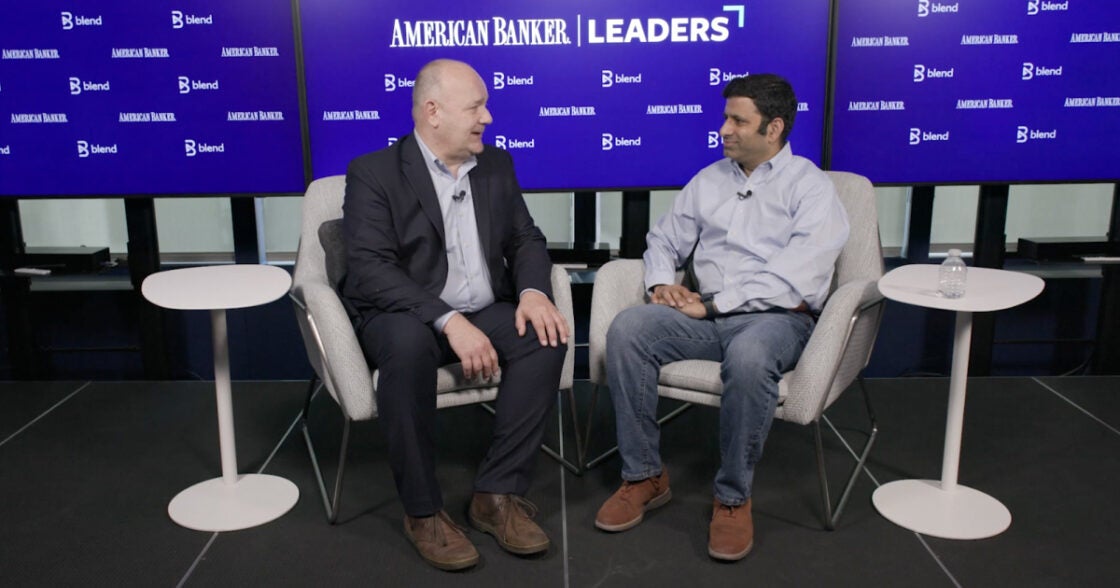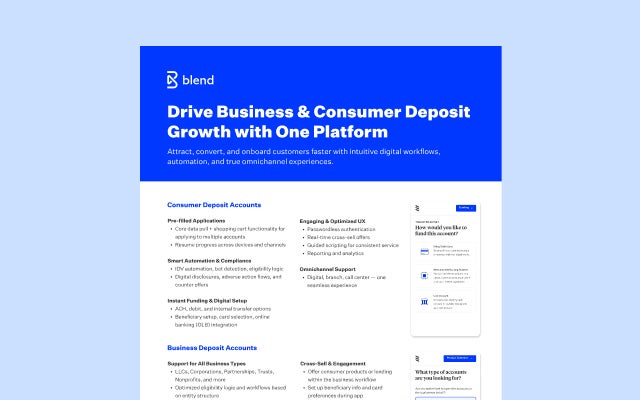May 12, 2021 in Challenges and solutions
4 steps for migrating banking customers to digital channels
It’s never been more important for banks to create exceptional, intuitive digital experiences that are accessible for all types of consumers.

Over the course of the last twelve months, the role of digital channels in financial services has taken on an increased importance. In a 2020 JP Morgan study, 54% of consumers polled said they used digital banking tools more than in 2019.
While much of this surge can be attributed to the Covid-19 pandemic, analysts predict that this behavior is likely to continue. In fact, more than 45% of banking customers say they now only interact with their bank through digital channels. For this group, the digital experience represents the entire customer experience.
However, the remaining 55% of customers are not ready to commit fully to digital quite yet.
Chart your path to digital with the right thought partner.
Subscribe for industry trends, product updates, and much more.
“Consumers who eagerly embrace digital channels value the ability to accomplish tasks more efficiently and on a timeframe that’s convenient for their schedule,” said Austin Kilgore, director of digital lending at Javelin Strategy & Research, when we asked him about the path to digital. “Meanwhile, those who still prefer in-person or paper-based processes are typically seeking an experience they’re already familiar with and that they believe will make it easier to ask questions or get help.”
Consumers on opposite ends of the digital spectrum share the same desire to confidently interact with their financial institution. “That’s why it’s essential to not only provide a comprehensive set of customer engagement tools, but also clearly communicate their availability and utility to customers,” Kilgore continued.
This moment in time gives lenders an opportunity to bring more of their customers on board with digital channels. The key to getting past any remaining resistance? Creating exceptional, intuitive digital experiences that can be easily accessed by all types of consumers. We’ve rounded up four important steps for migrating banking customers to digital channels.
Step 1: Take an omnichannel approach
Customers will feel more at ease using online banking channels if they are branded and deliver the familiar experience they are used to in a branch. But omnichannel banking is more than just providing customers with consistent services across physical and digital channels. Today’s consumers expect to move seamlessly between channels. In fact, 74% of consumers say they use multiple channels to start and complete a transaction.
True omnichannel banking is about meeting customers where they are, on their terms, with an experience that works smoothly between digital channels and in-person experiences. This can entail enabling a borrower to start an application in person then completing it online or using a digital channel to make an inquiry then handing it over to an employee.
Get this step right and the benefits can be significant. Companies with omnichannel customer engagement strategies retain on average 89% of their customers, compared to a customer retention rate of 33% for companies with weak omnichannel customer engagement.
Step 2: Focus on simplicity and ease of use
Ease of use is one of the biggest factors influencing the adoption of online banking services, so a simple user interface is incredibly important. Slow response times, lag, confusing interfaces, and overengineering can create friction between customers and financial institutions, limiting digital banking experiences and potentially risking relationships.
Details like in-app chat features and responsive design can have long-lasting impact. “Banks that encourage and support customers now will be well positioned to increase the use of digital channels in the future,” notes McKinsey.
Step 3: Offer support where it is needed
Consumers — especially those who are new to digital channels — want to feel reassured when making financial decisions. When lending teams prioritize communication efforts about the availability of digital channels, customers feel more confident in exploring the online options. And optimal online experiences take support a step further by answering questions as they come up in the moment to put users at ease.
Having a frictionless handoff to employees when things get difficult is important. But in some instances, human support isn’t always the answer. More than 80% of consumers are happy to take care of matters themselves before reaching out to a live representative. This underlines the importance of offering in-line support or tips for consumers as well as clear error message explanations and status updates to increase the intelligibility of interactions.
Step 4: Choose the right partner
Many software providers offer industry-agnostic applications that financial institutions can adapt. But technology that is built specifically for banking leverages expertise and domain knowledge, better enabling lending teams to deliver seamless, compliant digital experiences.
Choose a partner that offers the latest banking software that is purpose-built for the financial services industry. White-labeled solutions are useful too — they allow customized experiences and processes to best meet a financial institution’s needs.
How Blend’s Digital Lending Platform can help
Blend’s Digital Lending Platform is an out-of-the-box solution that enables financial institutions to migrate more of their banking customers to digital channels.
Our omnichannel approach allows lending teams to seamlessly start applications over the phone, in person, or send a link to borrowers to complete on their preferred device. Meanwhile, the user-friendly interface guides customers through their applications in clear, easy-to-understand language. Each step updates automatically based on previous answers, so applicants only see the questions relevant to them.
And consumers are offered support along the way. Answers to common, simple questions are built-in, and Blend’s Co-Pilot functionality helps loan officers to provide real-time assistance when things get tricky.
Easy single sign-on authentication and applications pre-filled with existing banking information on any digital device — teamed with guided borrower flows and instant decisioning — can help further.
The statistics speak for themselves. Blend customers have seen application completions increase by up to three times — and they report higher rates of consumer satisfaction too.

Ready to learn more?
Find out what we're up to!
Subscribe to get Blend news, customer stories, events, and industry insights.


